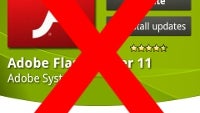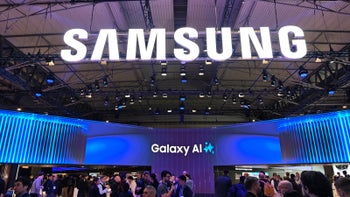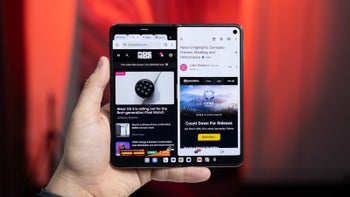Adobe officially pulls the plug on Flash for mobile, focusing on HTML5

Just as rumored earlier today, Adobe officially announced that it will cease further development efforts on its mobile version of the Flash player, and only offer bug fixes and other support functions.
The company is intent to shift its mobile efforts to HTML5 as the future of web standards, pulling the plug on Flash, which it acquired together with the purchase of Macromedia in 2005.
So the current Adobe Flash Player 11 edition in Android Market and for the BlackBerry Playbook will forever stay in our minds as the last major version before mobile Flash was put out to pasture.
Adobe says in the press release, however, that there will be an upcoming Adobe Flash Player 11.1 update, and this will be the last one. If it includes the promised Stage 3D hardware-accelerated rendering present in the desktop version, it should more than suffice until the vast majority of websites have completed the shift to HTML5 further down the road.
Adobe also noted that 3rd party source code licensees can keep working on their own versions of mobile Flash and out new releases, if so inclined. It will also continue to support Adobe AIR on mobile devices, so as developers can package Flash content as apps, and offer them in the application stores.
Flash to Focus on PC Browsing and Mobile Apps; Adobe to More Aggressively Contribute to HTML
POSTED BY DANNY WINOKUR, VICE PRESIDENT & GENERAL MANAGER, INTERACTIVE DEVELOPMENT AT ADOBE IN BUSINESS PROFESSIONALS, CREATIVE PROFESSIONALS, DEVELOPERS, VIDEO
Adobe is all about enabling designers and developers to create the most expressive content possible, regardless of platform or technology. For more than a decade, Flash has enabled the richest content to be created and deployed on the web by reaching beyond what browsers could do. It has repeatedly served as a blueprint for standardizing new technologies in HTML. Over the past two years, we’ve delivered Flash Player for mobile browsers and brought the full expressiveness of the web to many mobile devices.
However, HTML5 is now universally supported on major mobile devices, in some cases exclusively. This makes HTML5 the best solution for creating and deploying content in the browser across mobile platforms. We are excited about this, and will continue our work with key players in the HTML community, including Google, Apple, Microsoft and RIM, to drive HTML5 innovation they can use to advance their mobile browsers.
Our future work with Flash on mobile devices will be focused on enabling Flash developers to package native apps with Adobe AIR for all the major app stores. We will no longer continue to develop Flash Player in the browser to work with new mobile device configurations (chipset, browser, OS version, etc.) following the upcoming release of Flash Player 11.1 for Android and BlackBerry PlayBook. We will of course continue to provide critical bug fixes and security updates for existing device configurations. We will also allow our source code licensees to continue working on and release their own implementations.
These changes will allow us to increase investment in HTML5 and innovate with Flash where it can have most impact for the industry, including advanced gaming and premium video. Flash Player 11 for PC browsers just introduced dozens of new features, including hardware accelerated 3D graphics for console-quality gaming and premium HD video with content protection. Flash developers can take advantage of these features, and all that our Flash tooling has to offer, to reach more than a billion PCs through their browsers and to package native apps with AIR that run on hundreds of millions of mobile devices through all the popular app stores, including the iTunes App Store, Android Market, Amazon Appstore for Android and BlackBerry App World.
We are already working on Flash Player 12 and a new round of exciting features which we expect to again advance what is possible for delivering high definition entertainment experiences. We will continue to leverage our experience with Flash to accelerate our work with the W3C and WebKit to bring similar capabilities to HTML5 as quickly as possible, just as we have done with CSS Shaders. And, we will design new features in Flash for a smooth transition to HTML5 as the standards evolve so developers can confidently invest knowing their skills will continue to be leveraged.
We are super excited about the next generations of HTML5 and Flash. Together they offer developers and content publishers great options for delivering compelling web and application experiences across PCs and devices. There is already amazing work being done that is pushing the newest boundaries, and we can’t wait to see what is still yet to come!
source: Adobe













Things that are NOT allowed: